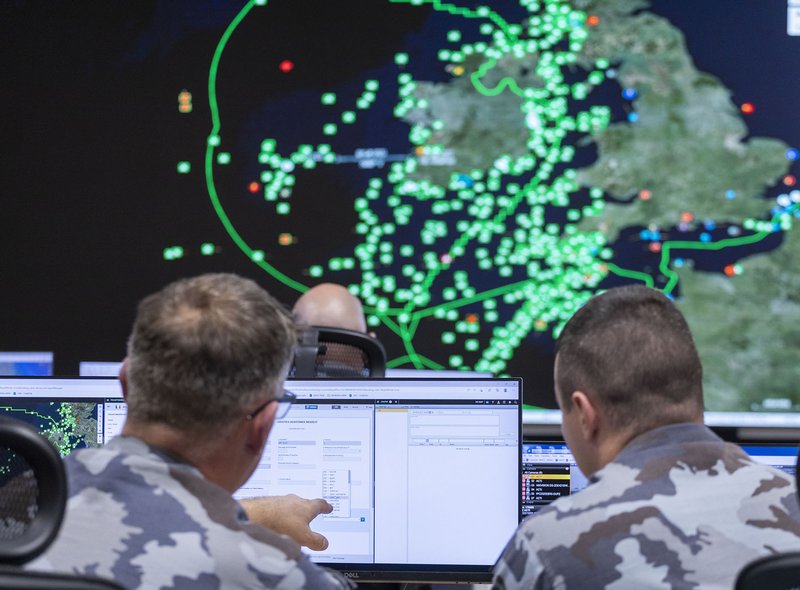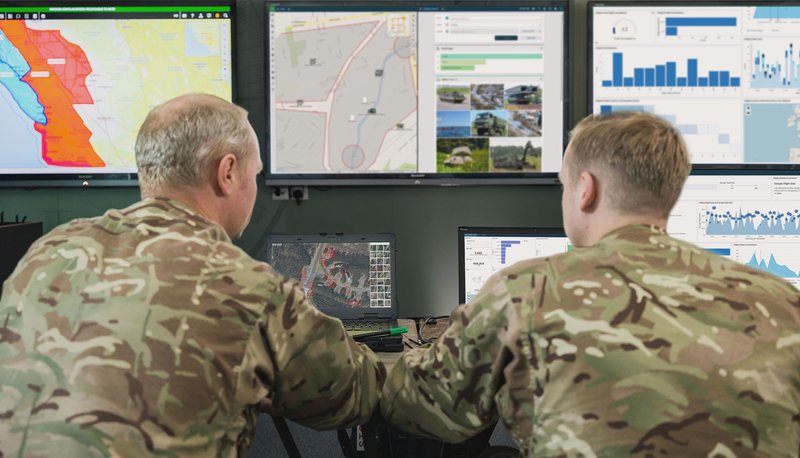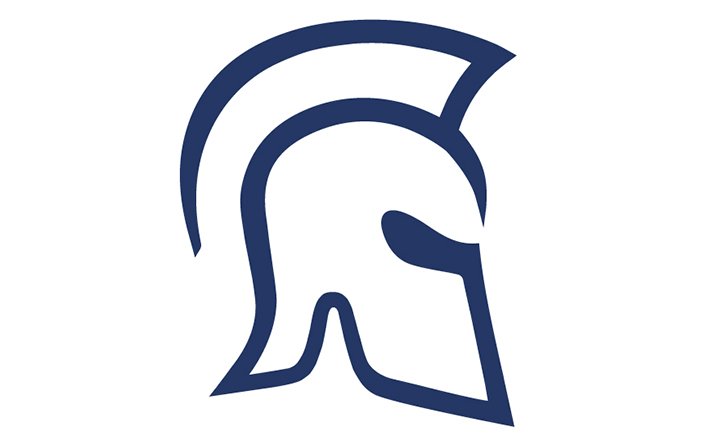Progressing an artificial advantage: Battlefield AI and C4ISR support (Sponsored)
This article is brought to you by Systematic
Gordon Moore observed in his famous Moore’s Law in 1975 that the number of transistors in an integrated circuit would double every two years. As a result, the ability for computing operations that are increasingly processor intensive can be moved away from fixed supercomputer sites and down to more mobile systems. This now means that Artificial Intelligence (AI) technology can be deployed to support battlefield decision makers both in the field and in command centres.
AI tools, such as anomaly detection, computer vision, data aggregation, and analytics all help the modern battlefield commander make the most informed decisions – helping to deploy resources appropriately for a greater likelihood of mission success.
Anomaly detection

Identifying suspicious activity in large amounts of data is a major benefit of using AI technology. (Systematic)
Being able to identify out-of-the-ordinary behaviour is a key skill of AI technology. An AI platform can be trained to understand a pattern of life and develop a baseline understanding of the movements of vehicles, ships, and more in an area of operations. When matched against other sensor and intelligence feeds – such as radars and AIS monitoring – any differences in behaviour can be readily identified. These alerts are passed to human operators for evaluation and response if necessary.
Within SitaWare Maritime, the variety of sensor feeds are fused into a single recognised maritime picture (RMP), with correlation and de-duplication of tracks supporting an intelligent overview of the maritime domain. A pattern-of-life is then established, which helps to show what normal activity is like in the area.
When unusual activity takes place – such as a vessel departing from a standard sea lane, the presence of an unusual vessel in a new area, or two vessels meeting at sea – then operators in a Maritime Operations Centre or on a vessel are alerted. This means that they can then respond and investigate if needed, or continue monitoring for possible further action.
Computer vision
Another facet of AI is computer vision. Computer vision involves the conversion of images into a machine-readable format for rapid analysis. This formatting enables the delivery of structured data at speed, and for a computer to be able to make decisions and recommendations faster than a human can. Object recognition in the first instance requires significant training of an AI system, with a detection system then drawing a box around the object to then undertake further assessment.
Classification of an object, once detected, is an additional task for an AI system to undertake. This involves the recognition of the object as something specific – such as a helicopter or military vehicle – and attaching metadata to this result. Training of an AI platform increases the accuracy of classification and metadata attribution, with the amount of training reducing over time as a library of similar images is built up through a data lake.
Other aspects of intelligence supported by computer vision include content-based image retrieval applied to image intelligence (IMINT). As overhead image intelligence has proliferated in the commercial and military domain, the need to deal with greater volumes of imagery has increased. A single location can be photographed using optical sensors, as well as space-based radar systems, airborne Lidar, infra-red photography, and more. Identifying changes across multiple areas of interest can be a time-consuming task, particularly when objects may be hard to see for a human analyst or require greater levels of analytical expertise to interpret.
As a result of this, deploying the advanced tools of SitaWare Insight’s data lake can enable interpretation of a greater range of image data types, with computer vision helping to detect, identify, classify, and tag objects as they are uploaded to the system.

Tools such as computer vision can help identify equipment, while dashboards can present data in easy-to-read formats. (Systematic)
Multiple data analysis
Multiple data analysis techniques can also be used to support decision-making in the command post environment, supported by AI and intelligence teams. Within a command post, analysis of an opposition force’s order of battle, doctrine, commander’s biography, and more can help to provide a list of wargamed outcomes for the immediate future of a battlespace. Intelligence artefacts – such as captured documents, image intelligence, and more – can further help to support possible derivation of an opposition commander’s intent.
For intelligence teams, the automation of some of the more burdensome tasks – such as translation, de-duplication, and more – by AI systems can lead to a more efficient work environment. This allows intelligence analysts to spend more time on analysis, and less time on data collection – reducing the time taken from tasking to product.
In the future, as AI capabilities can be deployed into smaller software packages with lower computing power requirements, the work performed by an AI system can be pushed closer to the edge of the battlefield. Mounted and dismounted commanders will have greater AI-driven capabilities, and will be able to make more informed decisions supported by higher levels of intelligence-driven battlefield awareness.
Data aggregation capabilities
Having a well-trained AI tool aggregate data means that larger amounts of data can be reliably presented to a commander to help them make decisions. Using multiple sources, such as different sensors or alternative intelligence gathering methods, to confirm information means that risks are reduced and the best insights delivered to a common operating picture (COP).
SitaWare Headquarters deploys AI through SitaWare Fusion as part of its capabilities to fuse and aggregate data from multiple sensor systems. This can include radars, sonars, ESM sensors, and more. As multiple sensors can overlap and present multiple contacts in a COP, SitaWare Fusion correlates and fuses the data together to allow for an accurate COP, as well as supporting the commander’s recognised intelligence picture (RIP).
As new big data intelligence sources are added to the commander’s toolbox - such as social media intelligence (SOCMINT), open-source intelligence (OSINT), and bespoke signals intelligence (SIGINT) tools - the ability to leverage these vast streams of data becomes an increasingly important aspect of building an accurate RIP that helps with mission success. AI can be deployed to sift through these assets, analysing metadata and the accuracy of content to identify threats and opposition capabilities. This aggregation and summarisation can help shape strategic and tactical plans, giving better and faster Intelligence Preparation of the Operational Environment (IPOE), while also improving battlespace awareness.
More from Industry Spotlights
-
![Expanded focus – unleashing the potential of commercial SATCOM for defence]()
Expanded focus – unleashing the potential of commercial SATCOM for defence
In conversation... Intelsat's Ray Lindenmayer talks to Shephard's Gerrard Cowan about the new capabilities advanced commercial SATCOM technologies can provide for military customers, and how industry and government can best work together to achieve maximum effect in orbit.
-
![Enhancing education: How CAE is embracing new technology to boost military training]()
Enhancing education: How CAE is embracing new technology to boost military training
In Conversation... Shephard's Gerrard Cowan talks to CAE's Marc-Olivier Sabourin about how the training and simulation industry can help militaries achieve essential levels of readiness by leveraging new technology, innovative procurement methods and a truly collaborative approach.
-
![Why tactical UAVs are winning on the future battlefield (Podcast)]()
Why tactical UAVs are winning on the future battlefield (Podcast)
In Conversation: In this special edition of the Shephard Defence Podcast, Tony Skinner sits down with Dan Slasky, President and CEO of Aeronautics, to explore how cutting-edge tactical unmanned aerial systems are reshaping today’s battlefields.
-
![Fincantieri’s Vulcano Class: a new era of versatility and innovation in naval operations]()
Fincantieri’s Vulcano Class: a new era of versatility and innovation in naval operations
Logistic support ships (LSS) are essential for sustained naval operations, especially during extended deployments far from home ports.
-
![Need more flexibility in battle management system delivery?]()
Need more flexibility in battle management system delivery?
Systematic’s newest solution, SitaWare BattleCloud, brings greater flexibility to combat information systems and C4ISR.
























